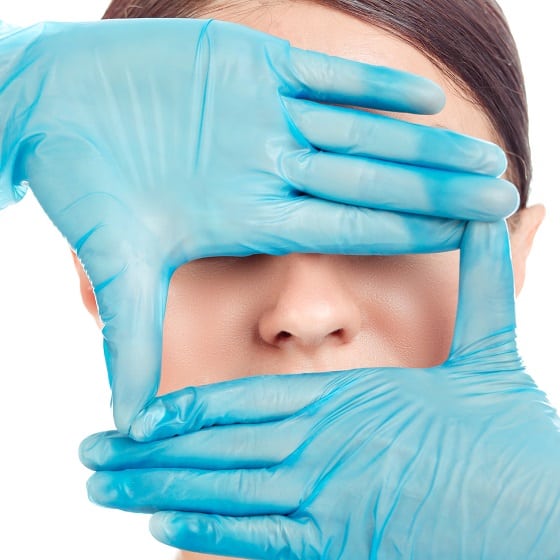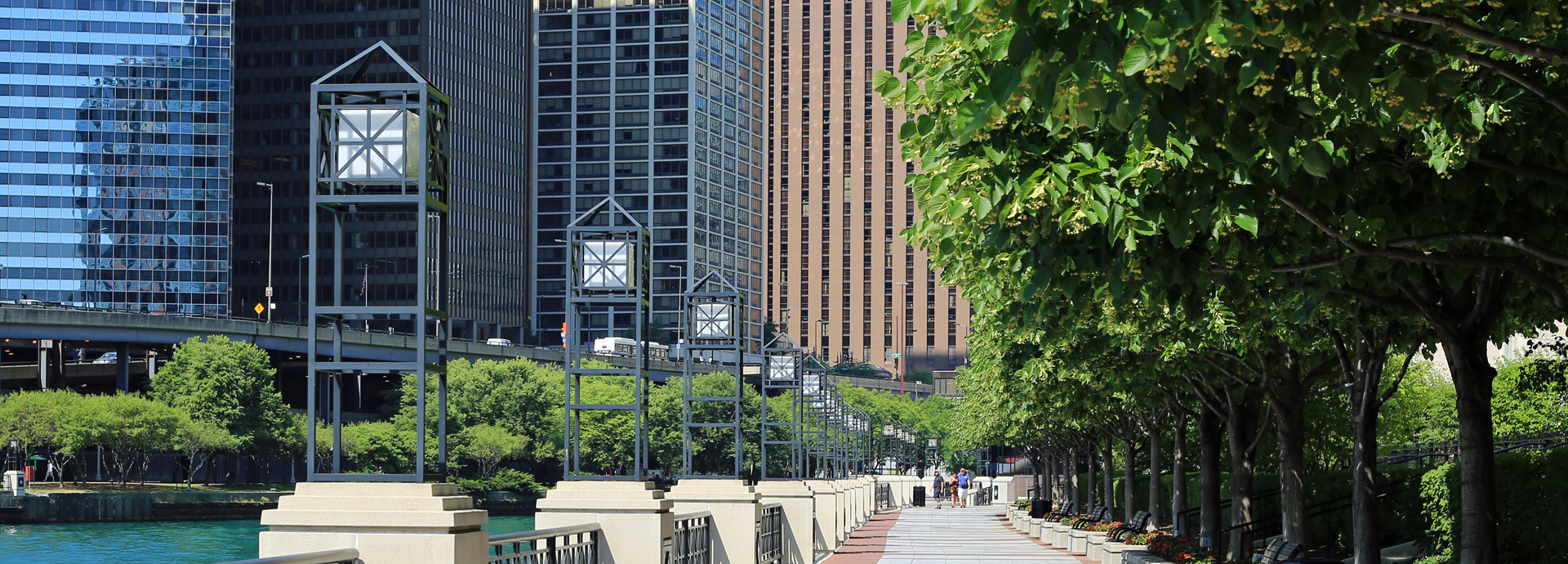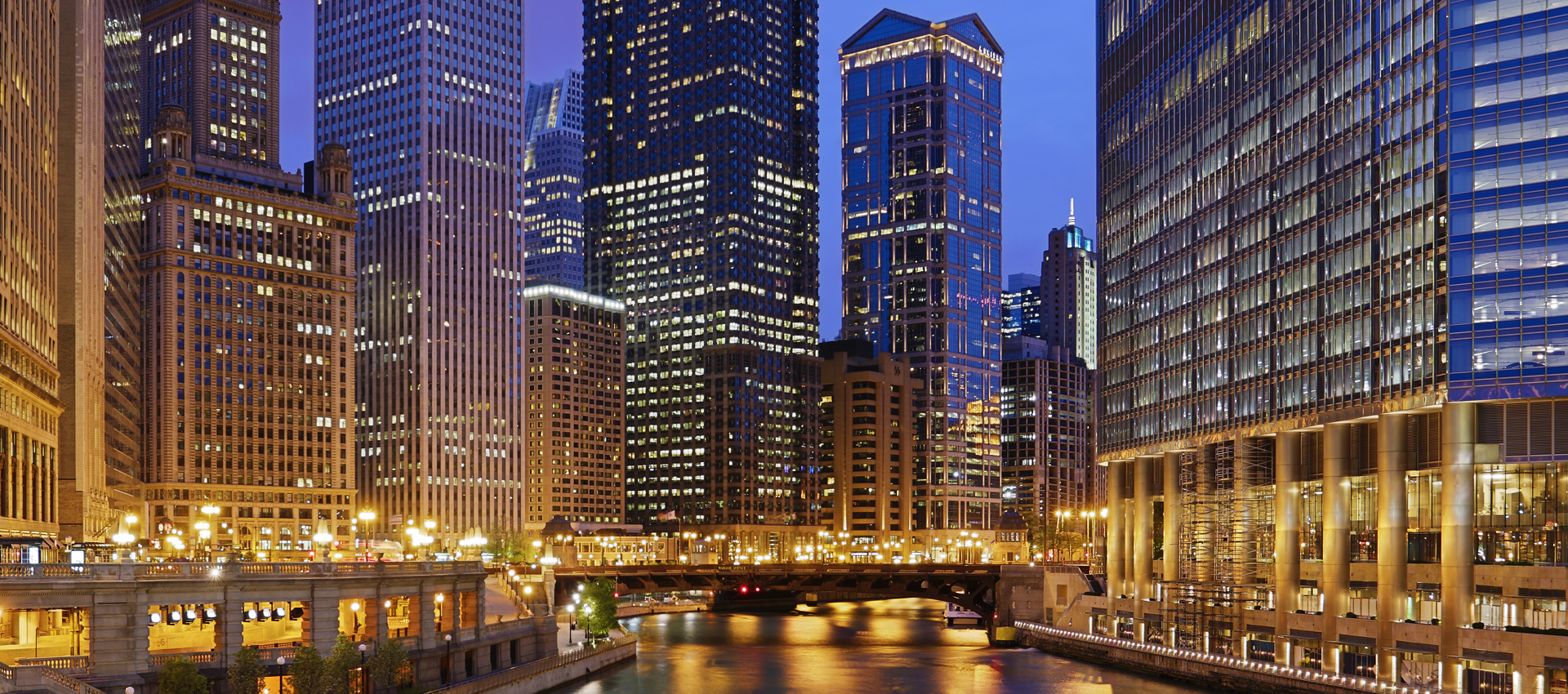Rhinoplasty (Nose Surgery) in Chicago, IL

Rhinoplasty is a surgical procedure to improve the appearance and/or breathing function of the nose. There are several reasons to seek rhinoplasty, including the following:
- Alter the proportion of the nose to better suit the rest of the face
- Correct impaired breathing caused by a structural abnormality
- Improve the appearance of the nose after an accident or injury
Rhinoplasty Candidates
Rhinoplasty candidates should be at least 13 years of age, in good physical shape and have specific, reasonable expectations of surgery. Our Chicago plastic surgeons can show you before-and-after rhinoplasty photographs to give you an idea of the type of results attainable with rhinoplasty.
Preparing for Rhinoplasty
Before undergoing rhinoplasty, you will need to meet with our surgical team to talk about your needs and determine your candidacy. Our surgeons will ask about your medical history, any past surgeries, what medications you take and what your expectations of surgery are. If you are deemed a suitable candidate, our team will work with you to develop a treatment plan that addresses your concerns.
Depending on your situation, you may wish to:
- Refine the tip of the nose
- Remove a bump from the bridge of the nose
- Bring the nose into better proportion to other facial features
- Treat a deviated septum
Upon scheduling your surgery, our team will give you a list of instructions to prepare for surgery. You may be asked to have some lab tests performed, to stop smoking in advance of surgery or to avoid certain medications, vitamins or supplements.
The Day of Surgery
Rhinoplasty is an outpatient procedure performed at our surgical center. Upon arriving at our facility and being escorted to the operating room, you will receive anesthesia to help you sleep comfortably during surgery. This ensures that you do not feel anything.
Our plastic surgeon begins by making an incision either within the nostrils (this is called the “closed” approach) or across the strip of skin separating the nostrils (the “open” approach). The surgeon then has access to the underlying structures of the nose. He can reduce or augment the nasal structures using cartilage grafted from other areas of your body. Or, he can straighten a deviated septum, refine the tip or nostrils or smooth a bump from the bridge of your nose. Once our surgeon has sculpted the nose to the desired shape or size, he will re-drape the skin and suture it together. A nasal splint may be placed to protect the nose as it heals.
Recovering from Rhinoplasty
Your nose will be swollen for a few weeks after rhinoplasty, but you will notice a gradual improvement in its appearance. In the weeks following your procedure, it’s critical to get as much rest as possible and refrain from any strenuous activity. Our surgical team will advise you as to how long you will need to take off from work or school, and will schedule several follow-up appointments to check your healing progress. Our surgeons will clear you to return to your normal routine when you’re ready.
Potential Rhinoplasty Risks
Possible rhinoplasty complications include excessive scarring, poor wound healing, numbness or change in skin sensation, bleeding and infection. Our plastic surgeons will discuss the risks of the procedure in greater detail; if you have specific concerns about the risks of rhinoplasty, don’t hesitate to ask about it.

Other Considerations
It can take up to six months for rhinoplasty swelling to completely disappear. Also, keep in mind that swelling can distort the final results.
You may be interested in complementing the results of your rhinoplasty with another surgical or non-surgical procedure. For example, Botox or dermal filler treatment can smooth wrinkles around the forehead or mouth. Brow lift can elevate a droopy brow, and eyelid surgery can tighten the lids and smooth under-eye bags.
What’s the difference between open rhinoplasty and closed rhinoplasty?
In a closed rhinoplasty, incisions are made within the nostrils. In an open rhinoplasty, the incision is made across the columella, the tissue between the nostrils. At your consultation, our experienced team will discuss with you what the best approach is for your situation.
Will I have scars?
If your procedure is done with the “closed” technique, then all incisions are inside the nose and no noticeable scars are created. If you have the “open” technique, then there will be a very small, unnoticeable scar in the skin between your nostrils.
What can I eat after rhinoplasty surgery?
Easily digested foods such as ginger ale, Jell-O, and canned soups are usually tolerated during the first 24-48 hours postoperatively. Try to avoid eating or drinking anything too cold or hot. If you don’t have nausea, you may resume your usual diet.
Can I bathe or wash my hair after rhinoplasty surgery?
Avoid bending your head forward as much as possible. Have someone help you wash your hair, keeping your head tilted backwards. If you are taking any pain medications, have someone help you with showers, baths, etc. You may bathe 24 hours after your operation.
Should I expect any bruising or swelling?
You can expect to have some swelling and bruising around your eyes and nose. Usually the amount of swelling, etc. depends upon how involved your procedure was.
When can I wear make-up again?
Make-up may be worn a few days postoperatively as long as it does not interfere with the nasal splints, packing or tapes.
Schedule a Rhinoplasty Consultation
To learn more about rhinoplasty surgery, please contact the team at Northwestern Plastic Surgery to schedule a personal consultation. Call us today or send us an email.




